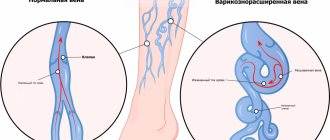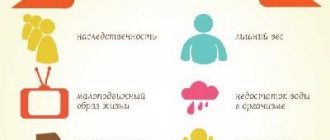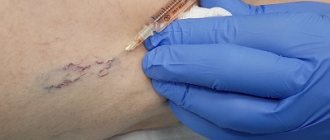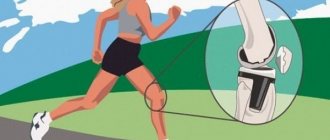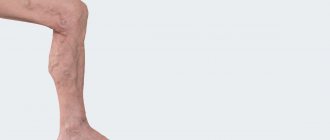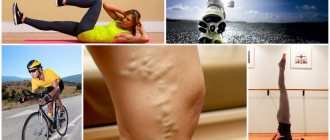“What to do if there is a sharp pain in the leg in the legs, the veins are swollen?” – people often ask on forums. Take an aspirin tablet, apply a compression bandage with an elastic bandage, elevate the lower limb and call the contact center of the Yusupov Hospital. Phlebology department doctors consult patients with acute pain in the veins of the legs 24 hours a day, 7 days a week. If a patient experiences throbbing pain in a vein in the leg, phlebologists immediately conduct an ultrasound examination and, using modern laboratory tests, determine the state of the coagulation and anti-coagulation system of the blood.
After receiving the results of instrumental and laboratory studies, conservative therapy is carried out using the latest medications registered in the Russian Federation. They have the most effective effect and have the minimum range of side effects. If a patient has very severe pain in the veins in his legs, phlebologists prescribe nonspecific anti-inflammatory drugs that have a pronounced analgesic effect. Local therapy is carried out with ointments and gels, which include venotonics, anticoagulants, and nonspecific anti-inflammatory drugs. A treatment regimen is individually selected for each patient depending on how much pain and stretching the veins in the legs are.
After the pain has reduced, doctors at the phlebology department decide on the need for surgical intervention. Phlebologists at the Yusupov Hospital are fluent in all currently known surgical techniques for varicose veins of the lower extremities. If sharp pain in a vein in the leg occurs due to acute venous thrombosis, phlebologists carry out thrombolysis therapy, and, if indicated, surgically remove the blood clot from the vein. A differentiated approach to the treatment of each patient allows phlebologists at the Yusupov Hospital to quickly and effectively relieve acute pain in a vein in the leg.
Varicose veins of the lower extremities - what is it?
Varicose veins of the lower extremities - what is it? Why does it appear suddenly and progress so quickly? Today, it is considered a common disease in which there is an abnormal enlargement of veins that are visible through the skin and resemble blue or purple nodes. Varicose veins are a pathology that can occur in any part of the body, but is more common on the legs.
This is how varicose veins appear on the legs
Below are the most common signs of the disease. However, each person may only notice some of them.
What types of exercise are beneficial and which are harmful for problems with veins?
Any dynamic loads, without moving heavy objects, are very useful. These include a treadmill, jogging, walking (especially Nordic walking), and exercise bikes. All this will disperse the existing stagnation in the vessels. As for various exercise machines, it is clear that putting a lot of stress on the legs is harmful, but even lifting weights with your arms strains the abdominal muscles, and this greatly affects the blood flow in the lower extremities. But no one has canceled the health benefits of a pumped-up body and a good muscle corset, so it is advisable to consult with a specialist before classes, and it is better to exercise under the supervision of a trainer. The best exercises for preventing varicose veins are swimming and water aerobics. And in general, any dynamics, any sports and physical education are useful! Even if you have problems with your veins, you don’t need to stop doing what you love, because compression hosiery exists. In general, consult a phlebologist to see if you need any restrictions. Statics, static loads for veins are definitely bad. Work and training with weights is possible, but in compression stockings.
Causes of varicose veins and risk factors?
Blood vessels in the body provide a channel for blood flow. In terms of the blood vessels of the lower extremities, the arteries carry high-pressure, oxygenated blood from the heart to the lower extremities. Veins therefore have thinner and less elastic walls than arteries. If pressure rises in the veins for any reason over a long period of time, this can become the main cause of varicose veins of the lower extremities. The disease is also facilitated by malfunction or damage to the valves that help push blood upward.
The functioning of venous valves normally and with varicose veins
About 30% of adults worldwide suffer from the disease. The risk varies greatly by age and gender. The following are risk factors:
- Obesity. Obesity is a major risk factor for the development of varicose veins of the lower extremities. Excessive weight increases pressure in the veins and aggravates their condition.
- Heredity. Heredity plays an important role in determining susceptibility to varicose veins, but specific factors responsible have not been identified.
- Inaction. Prolonged inactivity or, conversely, increased activity increases pressure in the veins.
- Floor. Women are especially susceptible to varicose veins of the lower extremities due to the effect of progesterone on the veins, as well as the effects of pregnancy. Women have a 3 times higher risk of developing the disease.
- Pregnancy. Varicose veins of the lower extremities during pregnancy occur due to hormonal influences. However, enlarged veins often return to normal within one year after giving birth. Pelvic varicose veins may also be observed.
- Age. Varicose veins of the lower extremities usually affect people between 30 and 70 years of age. As we age, the elastic lining of the vein begins to weaken, increasing the chances of enlarged veins.
A risk factor is anything that can increase a person's chances of developing a disease. This could be due to activities such as smoking, diet and many other reasons.
Who most often suffer from leg vein pain?
According to the latest data from the World Health Organization, 60% of working-age residents of developed countries suffer from varicose veins. Moreover, venous disease is one and a half times more common among the fair sex. This is due to the genetic predisposition of women to varicose veins, as well as to the factor of their reproductive function. During pregnancy, women experience some restructuring of the balance of the hormonal system, which causes an increase in body weight, as well as the total volume of blood circulating in the body of the expectant mother. All this, with each subsequent month of pregnancy, negatively affects the vascular wall, as well as the pelvic vessels.
Therefore, if you notice the symptoms of heaviness in the legs described above, it is recommended to immediately make an appointment with a phlebologist and come for an examination and diagnosis.
How is surgery for varicose veins performed?
Varicose veins of the lower extremities - stages
- First. Spider veins appear;
- Second. Nodules are visible;
- Third. Swelling of the legs is added;
- Fourth. Skin color becomes darker, almost purple;
- Fifth and sixth. Ulcers form, which may not heal as a result.
This is what varicose veins look like in stage II of the disease
Treatment
Due to the large number and heterogeneity of diseases that cause pain, there is no single treatment regimen. Pathologies such as arthritis and arthrosis are treated conservatively, prescribing painkillers, anti-inflammatory drugs and drugs that restore cartilage tissue. To get rid of gout, in addition to medications, a specific diet is of no small importance.
Injuries require fixation of the limb and gentle motor mode.
Infectious pathologies require a course of antibiotics.
Deformities can be treated over a long period of time. As a rule, doctors try to make do with therapeutic methods, orthopedic devices, physiotherapy and therapeutic exercises. In extreme cases, surgery has to be performed.
If your feet hurt on the top, sides or soles, there are a huge number of reasons. Self-treatment is unacceptable, because many ailments have similar symptoms, and it is very easy for a non-specialist to make a mistake with the diagnosis. An incorrect diagnosis can cause disability.
We specialize in the treatment of the musculoskeletal system, even in severe stages of disease. We have been helping thousands of patients avoid surgery for 10 years!
Our doctors
This is the strongest team of experts who teach at the RUDN Department. We are the clinical base of leading universities, where the best doctors in Moscow, unique specialists from Russia and abroad are trained.
Varicose veins of the lower extremities - diagnosis
In addition to reviewing your medical history as well as a physical examination, testing for vein disease may include the following:
- Duplex scanning is a type of procedure that evaluates the blood flow and structure of the veins in the legs.
- Triplex ultrasound is a procedure similar to duplex ultrasound, which uses color to highlight the direction of blood flow.
- Magnetic resonance venography (MRV) is a diagnostic procedure that uses magnetic resonance technology and intravenous contrast material to visualize veins.
Diagnosis of varicose veins of the lower extremities is carried out with the patient standing
Diagnostics is necessary so that the doctor can prescribe a treatment method that is most suitable for the patient.
Varicose veins of the lower extremities - complications
If varicose veins on the legs are not treated, serious problems may arise in the future, both with the veins and with the skin of the legs.
- Trophic ulcers.
- Phlebitis is inflammation of the veins.
- Deep vein thrombosis (DVT), where blood clots form in the deep veins of the legs. This complication can be fatal.
Because of this, the disease can cause significant discomfort and even disability depending on any underlying tasks and severity. Some of these complications can be very life-threatening.
Why you shouldn’t delay treatment when symptoms of varicose veins appear
It should be noted that the degree of overstretching of the veins in each individual case is different, and therefore the consequences of varicose veins are not always possible to predict. Among the most common complications are thrombophlebitis, trophic ulcers, as well as bleeding and thromboembolism with irreparable consequences.
As for surgical intervention, it is usually resorted to in advanced cases. Among all the currently existing surgical techniques, modern miniphlebectomy and innovative endovasal methods of vein obliteration stand out. Much attention should be paid to the prevention of varicose veins. For this purpose, it is better to seek advice from a good phlebologist in Moscow. Do not self-medicate under any circumstances. The consequences can be very sad.
Varicose veins of the lower extremities - drug treatment
It is not always necessary, but if you are concerned about pain, ulcers or just discomfort, then, as a rule, you need to go to the hospital. But do not forget about complications, some of which lead to death, therefore, in order not to worsen the general condition, do not ignore treatment and seek medical help if you have varicose veins of the lower extremities. The doctor will explain conservative treatment and its essence.
One of the most popular venotonic drugs
Varicose veins of the lower extremities, treatment. Operation?
Don't panic if you are diagnosed with varicose veins of the lower extremities. Sclerotherapy treatment may help. This procedure is based on the use of a special solution that is injected into varicose veins. Varicose veins of the lower extremities disappear quite quickly. Sclerotherapy treatment is suitable for treating small veins such as spider veins. Are you afraid of a knife? Varicose veins of the lower extremities can be removed (treatment without surgery). You just need to find a decent doctor.
Varicose veins. Laser treatment in Moscow
Life does not end if you have varicose veins of the lower extremities. Laser treatment will help. The doctor inserts a tiny fiber into the varicose veins through a catheter. The fiber sends out energy that destroys the affected part.
This is a tiny laser fiber that completely eliminates varicose veins
Do varicose veins of the lower extremities remain? Laser treatment, which may seem expensive, is very effective, so the answer is no. Not every patient worries if he has varicose veins of the lower extremities. However, laser treatment leaves only positive reviews. With it, varicose veins of the lower extremities will be defeated! Laser treatment (you will find out the cost at the clinic from the administrator) is short-lived and inexpensive.
Varicose veins. Radio frequency treatment
What to do if you have severe varicose veins of the lower extremities? RFA treatment in Moscow is the safest method, which involves heating the venous wall using radiofrequency energy. Varicose veins of the lower extremities disappear permanently. RFA treatment is very convenient.
How quickly do varicose veins of the lower extremities disappear? RFO treatment in Moscow will convince you of its rapid effect. You will remove varicose veins of the lower extremities. RFO treatment is performed at the highest level. Look at the photos and results - make sure the procedure is effective.
How to treat varicose veins of the lower extremities with ointments
Today, modern drugs can surprise you with their effectiveness and quick results, however, you should not do anything without the advice of a doctor.
- Anti-varicose leg cream – relaxes and relieves pain. Strengthens the walls of blood vessels.
- Heparin thins the blood and helps reduce the formation of blood clots.
- Lyoton 1000 - relieves swelling, strengthens the walls of blood vessels, but does not completely remove varicose veins of the lower extremities. Treatment (the cost of Lyoton is more than that of other creams) in this way is still incomplete.
Of course, the easiest way is to go to the pharmacy and start treatment yourself, however, you don’t need to flatter yourself with hopes that the ointment or gel will provide you with reliable treatment and will not cause complications. Consult a doctor and do not deceive yourself.
Causes of pain syndrome
Long-term research and medical practice indicate a variety of factors leading to painful sensations in the foot. It can be:
- injuries;
- muscle failure;
- autoimmune pathologies;
- uncomfortable shoes;
- lack of calcium;
- hygroma;
- incorrect anatomy.
It should not be ignored if there is pain in the top of the foot or in other parts, swelling, or fever. This may be a sign of serious malfunctions in the body that can lead to disability.
As a rule, discomfort covers the entire foot, which complicates diagnosis and requires high medical skill. Complaints should be addressed to:
- orthopedist;
- traumatologist;
- rheumatologist.
Of course, narrow specialists are available only in specialized clinics. In the clinic, a surgeon is in charge of diseases of bones, cartilage and joint tissue.
Varicose veins of the lower extremities - treatment at home
How unpleasant varicose veins of the lower extremities are! Our grandmothers still use folk remedies to this day, and knowing the effect of medicinal herbs, you can relieve symptoms and strengthen the walls of blood vessels. But make no mistake - serious varicose veins of the lower extremities, treatment, price, results - everything is interconnected.
- Horse chestnut. Dried flowers (50 g) are poured with vodka (500 ml). Let it brew for 20-21 days and take it orally, before meals, 25-30 drops 2 times a day.
- Garlic ointment. Make a paste of garlic and butter. Rub in before going to bed.
- Apple vinegar. 2 tsp dilute in 200 ml of water. Take before meals. This product has good reviews.
It is important to know that varicose veins of the lower extremities (prices, photos, results are available online) cannot be completely removed with herbs.
How to cure varicose veins permanently?
Unfortunately, if you neglect the disease, both you and your doctor will have to work hard to forget about varicose veins in your legs. At the first stage, the disease responds well to any treatment method, but later stages can upset you. You shouldn’t think about how to treat varicose veins of the lower extremities at home. Contact our center and you will be prescribed the right treatment, thanks to which you can get the desired result.
All you need to do is take better care of your health and adhere to basic preventative measures.
Opportunities of the Innovative Vascular Center
- Thermal methods for treating varicose veins are endovenous laser coagulation (EVLC) and radiofrequency obliteration (RFO) of the veins of the lower extremities.
Endovenous laser coagulation is an effective treatment for varicose veins, the principle of which is based on the thermal effect of laser energy. This treatment was introduced in 2001 and is still the best method. With laser coagulation, the damaged vein is heated by a laser beam, which provides a strong effect of damaging the collagen of the venous wall, causing an inflammatory process in the vein and its overgrowth. Advanced varicose veins on the legs, which are treated with this method, regress completely and without a trace, and its main symptoms disappear: swelling, heaviness in the legs, hyperpigmentation of the skin. Varicose veins have been treated at the Innovative Vascular Center in Moscow using lasers since 2005, since the advent of this technology in Russia.
EVLT begins with the installation of a laser fiber into the lumen of a varicose vessel through a skin puncture, which is guided along the affected vein to the site of the incompetent valve. For the patient, this method is a safe, painless and reliable way to prevent further development of the disease and its complications. Complete elimination of varicose veins is observed in 98% of patients with proper use of the EVLT method. The capabilities of this method make it possible to both treat varicose veins on the legs in women and correct venous outflow in case of trophic ulcers.
Radiofrequency obliteration (RFO)
Treatment of varicose veins using the radiofrequency obliteration (RFO) method is a similar thermal method, but heating of the tissue of the venous wall occurs according to different physical principles due to radio wave energy. Radiofrequency obliteration allows you to remove varicose veins and eliminate its symptoms; such treatment in its immediate and long-term results does not differ from EVLT, but is more painstaking for a phlebologist.
Other thermal methods
When deciding how to treat varicose veins, phlebologists often used exotic methods. Varicose veins were treated with thermal effects using superheated steam and bipolar electrocoagulation. However, modern thermal methods are more effective and they allow the doctor to prevent further development of varicose veins, and the patient to be treated on an outpatient basis without disturbing his lifestyle. In the hands of a novice phlebologist, thermal ablation methods can cause unpleasant complications: decreased sensitivity, burns, seals. The effectiveness of this method in the hands of an experienced phlebologist is more than 98%, and the laser method and RFO make it possible to get rid of not only the initial form but also severely pronounced varicose veins on the legs without incisions. In the photographs from the “Treatment Results” section you can see the view before and after minimally invasive treatment.
Non-thermal methods for eliminating stem reflux
For many years, phlebologists have been thinking about how to cure varicose veins of the lower extremities without incisions and pain. The disappearance of the saphenous veins in the arms after frequent injections prompted the idea that certain substances can cause inflammation of the vein walls - thrombophlebitis and subsequent gluing of them with the disappearance of the lumen of the vein. After the advent of the Fegan method, when treatment began to be carried out based on the cause of varicose veins, the development of non-thermal scleroobliteration methods began. Since then, varicose veins on the legs, especially in women, are treated not only with a scalpel, but also with a syringe.
- Sclerotherapy
Sclerotherapy appeared in the practice of doctors at the end of the 19th century. In recent years, the method of treating varicose veins using injections of a special substance (sclerosant) has reached perfection. The main point of sclerotherapy is to inject a drug into a varicose vein, which causes inflammation and subsequent gluing of the varicose vein. Sclerotherapy does not involve eliminating the cause of venous insufficiency and is more suitable for certain forms of varicose veins or in the initial stages of the disease. Advanced varicose veins of the lower extremities are treated with more complex methods; damage to the trunk of the great or small saphenous vein does not allow one to count on a long-term effect of sclerotherapy, since a relapse is sure to occur due to reflux.
Sclerotherapy can be done if you are not allergic to tetradecyl sulfate or polidocanol. These substances are the main sclerosants. During sclerosing treatment, manifestations of thrombophlebitis may occur, especially if liquid forms of the drug are used. Sclerotherapy of perforating veins is highly effective in the treatment of venous trophic ulcers. It is possible to eliminate the manifestations of varicose veins of the lower extremities at any stage with the help of sclerotherapy, but the relapse rate is about 40% over the next 5 years.
The advantage of sclerotherapy is a good immediate effect and low cost of treatment. Injections of sclerosant lead to the gluing of veins and the cessation of the pathological process - reflux of blood through the saphenous veins. The drug is usually injected in the form of foam (Foam-Form) into varicose veins. A spasm of dilated subcutaneous vessels is formed, prolonged contact of the foam form of sclerosant with the vein wall and their subsequent inflammation and gluing. This process occurs unevenly and the degree of obliteration of the vein is not the same, so 40% of patients after sclerotherapy have relapses of varicose veins. After sclerotherapy, the affected area of the veins of the lower extremities closes and over time completely heals, and the blood flow in the opposite direction stops. To prevent the occurrence of skin necrosis due to the penetration of the foam form of sclerosant into the subcutaneous tissue, administration is carried out strictly under ultrasound control.
Foam sclerotherapy can be used as a stand-alone method or in combination with laser treatment to eliminate varicose veins. The number of sessions to eliminate varicose veins using sclerotherapy depends on the stage of varicose veins and the condition of the veins. The course of treatment usually consists of 2-3 procedures. The area of skin over the sclerotic vessel may take on a dark shade for 2-3 months (hyperpigmentation appears). It can ruin a woman's legs for several months, so this treatment is best done in the winter months. Drug treatment and ultrasound-guided vascular punctures can speed up the process of resorption of intravascular fluid accumulations (coaguls), the risk of which is about 10%. Coaguli form when there is insufficient compression, but will certainly go away over time. Many patients know that within a month after sclerotherapy, the signs of varicose veins of the lower extremities go away for many years, which is why sclerotherapy is still one of the most popular treatment methods.
- Using special glue (VenaSeal)
Since its inception, this method has aroused great interest among phlebologists. It involves gluing the trunk of the great saphenous vein with a special cyanoacrylate glue. In the lumen of the vessel, this glue polymerizes and fills the lumen of the dilated vessel. According to the developers, this method does not require any anesthesia, and a “plug” appears in the vessel, which reliably blocks blood flow. Taking this into account, half an hour is enough for the procedure to eliminate varicose veins on the legs. Venasil is the only technology for the treatment of varicose veins that does not require wearing compression stockings.
Most women can return to normal activities immediately. Symptoms of chronic venous insufficiency are relieved shortly after the procedure. The process of active promotion of this glue to the phlebological market should begin in the near future. However, there are certain disadvantages: The presence of a foreign body in the human body. The curdled glue remains in the vessel forever and can cause chronic allergies; sometimes there is inflammation of the vessel wall or rejection of the polymer with suppuration. Acute thrombophlebitis of the glued vessel may occur.
The use of glue in the trunk of the great saphenous vein does not eliminate the need to eliminate varicose tributaries, which is why doctors will have to remove signs of subcutaneous varicose veins with sclerotherapy or miniphlebectomy. The visible effect of using glue appears only when combined with other methods of eliminating varicose veins. The patient has to pay more. The unreasonably high cost of the gluing kit makes this procedure significantly more expensive than the modern laser or radio frequency method.
In our clinic, preference is given to thermal methods. We believe that it is better to give good local anesthesia than to treat varicose veins of the saphenous veins on the legs with an expensive and untested method. Moreover, the result is the same at best. If a relapse occurs, the patient will have to undergo a complex operation to remove the sealed vessel, since other methods will no longer be applicable.
- ClariVein mechano-chemical obliteration technology
The modern method of combined treatment of reflux along the subcutaneous venous trunks adds extra weight to conventional sclerotherapy. Mechano-chemical procedures mean a combination of mechanical damage to the inner surface of the venous wall and the introduction of a sclerosing drug. A catheter is inserted into the main saphenous vein through a puncture under ultrasound guidance. After installing the catheter in the desired location, the device is connected. The rotating sharp head of the catheter makes up to 3.5 thousand revolutions per minute, causing severe damage to the inner layer of the venous wall. At the same time, a sclerosing drug is injected through the catheter, which “mixes” in the lumen of the vessel and, using the rotating part of the catheter, acts on the vascular wall, causing its inflammation and gluing.
To date, the only advantage of this technology is the absence of the need for tumescent anesthesia. Mechano-chemical obliteration should, according to its inventors, trigger a stronger obliteration effect than foam sclerotherapy, although for some reason convincing data have not yet been presented. It is clear that such varicose veins can be treated with other minimally invasive methods, so its advantages are not obvious. The introduction of such therapy in Russia will begin in 2021, but statistical data on its advantages over EVLT and sclerotherapy do not yet exist. We have to wait for further studies from Europe or the USA in order to accurately determine the place of this technology.
- Miniphlebectomy
This is a modern microsurgical aesthetic method for removing varicose veins. It involves a delicate technique of puncturing and pulling out varicose veins using special tools. This operation is not for a novice phlebologist; you need to have the skills of delicate surgery. Miniphlebectomy is an operation without the use of a scalpel and is performed under local anesthesia. The punctures are carried out in the direction of the skin lines, so after 2 months they are practically invisible.
Miniphlebectomy has replaced the classical operation for varicose veins, which involves the use of 1-3 cm incisions, as it is aesthetically flawless, painless and very effective. By assuming how varicose veins manifest, the doctor can clearly plan micro-punctures and get by with minimal intervention. The patient can go home on his own feet immediately after the operation. Miniphlebectomy can be an independent effective method of treating varicose veins, or used in combination after laser coagulation of varicose veins. Removal of varicose veins is carried out using a special technique developed by Professor Varadi. This technique has been perfectly mastered by our phlebologists and allows for the removal of varicose veins on the legs - an effective treatment regardless of its cause.
Frequently asked questions from our patients on the Internet
How to deal with varicose veins on the legs? Daria from Saratov is interested in:
Dear Daria! It is necessary to combat varicose veins in the legs with the help of good specialists. No matter how promising and colorful the sites with guides and advice on self-medication are, remember, they are written by people far from medicine.
How to check your legs for varicose veins? Svetlana from Kazan asks:
Dear Svetlana! As a rule, it is possible to qualitatively check your legs for the presence of varicose veins only in a clinic or medical center specializing in the treatment of veins.
How to diagnose varicose veins? Interested in Lyubov from Stavropol:
Dear Love! You can diagnose your legs for varicose veins at a consultation with any of our phlebologists with an ultrasound duplex scan of the venous system. How easy is it to do this with us? Make an appointment for a consultation at any time convenient for you by phone.
Compression jersey medi
Thanks to the breathable and elastic material, compression jersey provides high wearing comfort. Modern medical compression hosiery is visually indistinguishable from model hosiery, but provides high medical effectiveness when used.
Here you can find more information about medi compression stockings.
The human body
How do veins work?
Vienna
Product Tips
Ideal compression product
Compression hosiery
